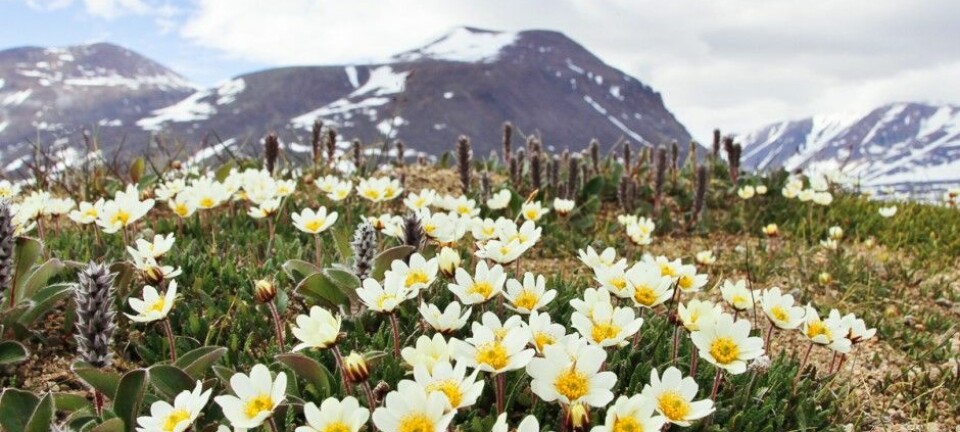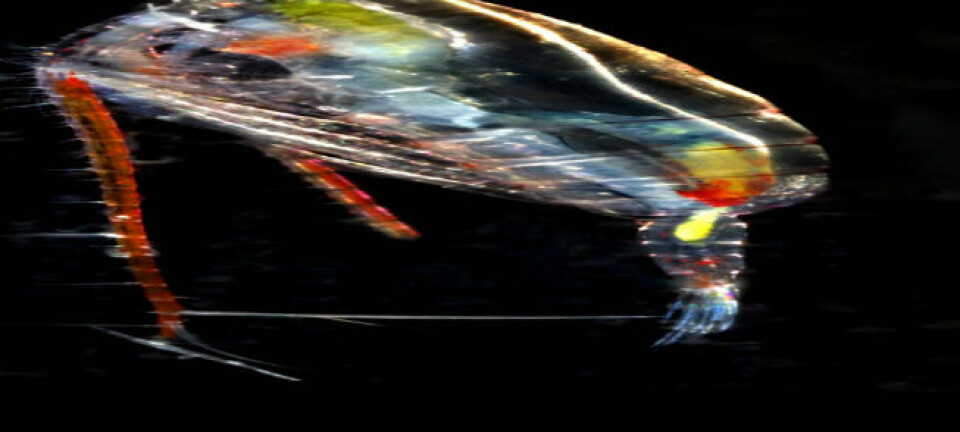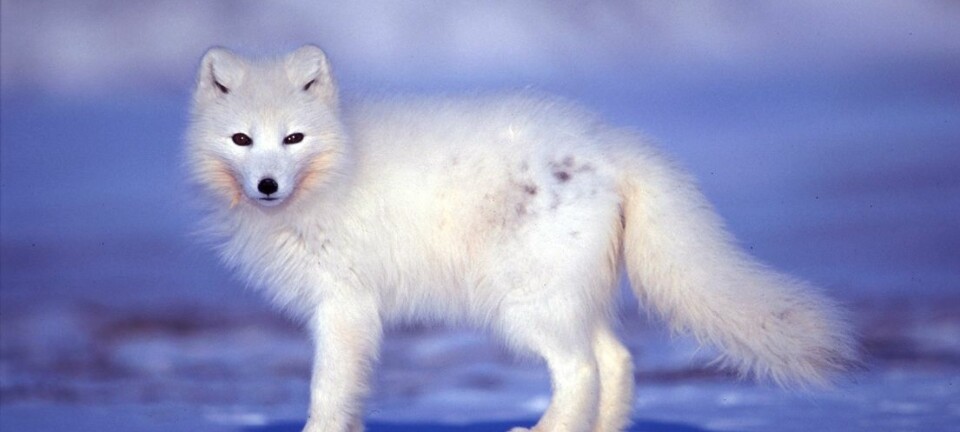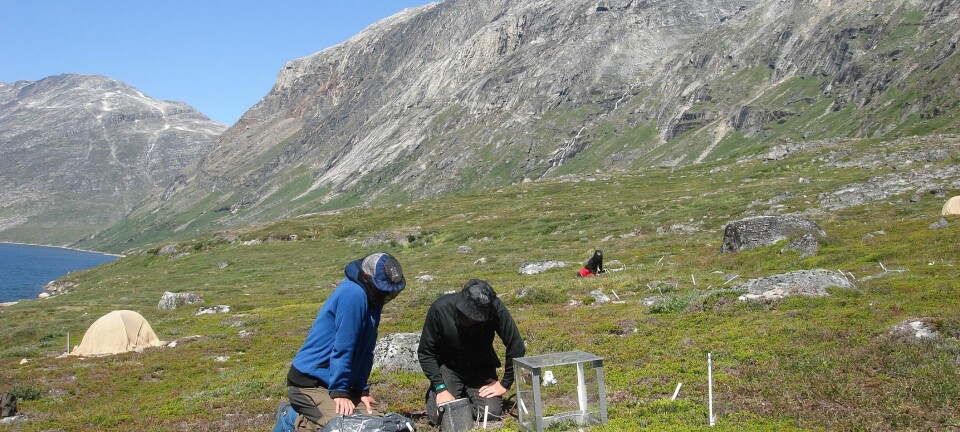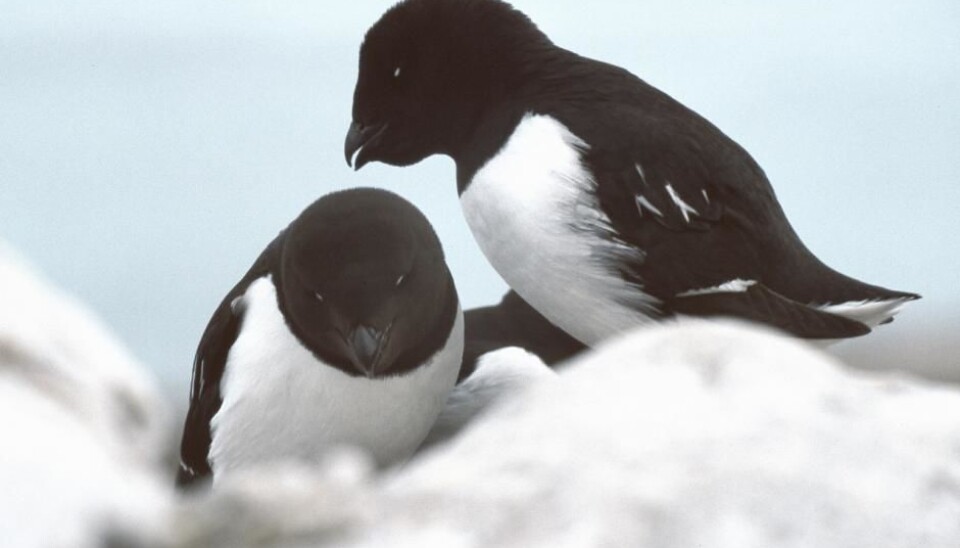
Tiny bird’s poo has tremendous impact on Greenland’s nature
The little auk can affect the living conditions for a range of animals in Northwest Greenland, shows new research.
The little auk is by any measure a tiny bird. At just 160 grams, which is about one third the weight of a pigeon, yet, it has as a surprisingly big influence on the landscape near Thule in Northwest Greenland.
It turns out that many larger animals like musk ox, geese, reindeer, foxes, hares, and many more have much to thank the little bird for: auk poop provides nutrients for grass and flowers. However, it also makes the nearby lakes and waterways so acidic that almost nothing can survive there besides algae.
“The auk literally transforms the landscape,” says co-author Thomas Alexander Davidson from the Department of Bioscience and The Arctic Research Centre at Aarhus University, Denmark.
“Their faeces create an oasis for animal life in the area where otherwise not much grows. It’s spectacular. Especially when it’s not just a little spot on the map, but a 325 kilometres stretch, which is also the same place where the first people decided to settle when they came to Greenland many thousands of years ago,” he says.
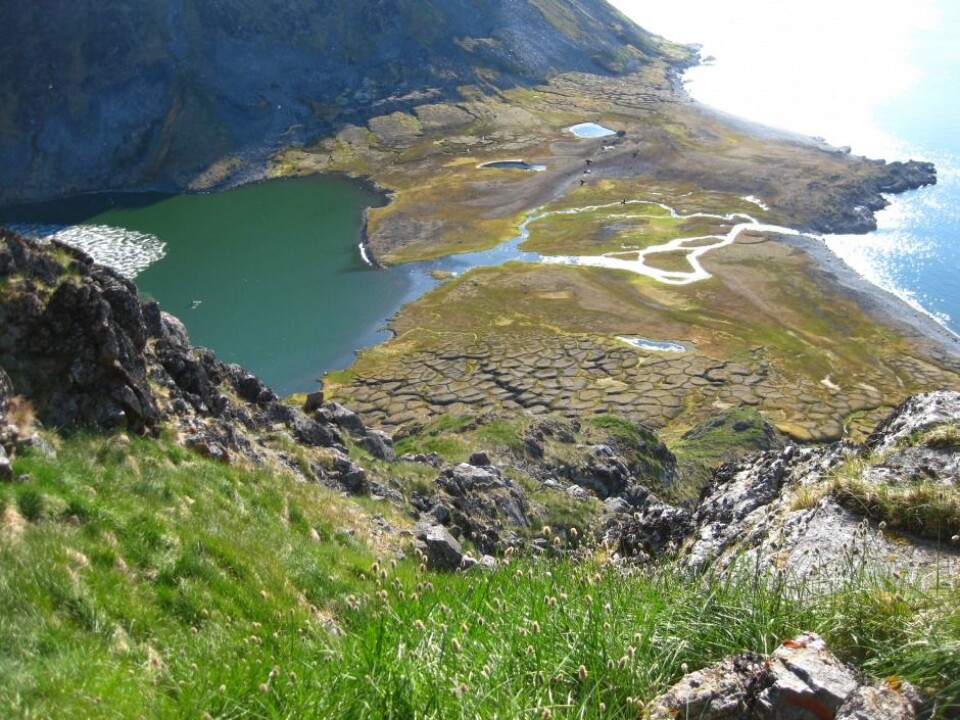
The study is published in the scientific journal Proceedings of the Royal Society B. The results are a part of the cross-disciplinary “NOW project,” financed by the Carlsberg Foundation and Velux Foundation.
Read more about science in Greenland in our Greenland Science Special.
Climate change could destroy it all
Carsten Egevang has a Ph.D. in Arctic birds and has studied little auks for many years—first as a research scientist and now as a photographer. He was not involved in the new research, but has read it and is impressed.
People have known about these green areas for many years, but this is the first time that scientists have qualified and quantified the influence of these little birds, he says.
“In nature, nutrients are most often transported from land to sea, but here we have an example of it going the other way. We don’t see this very often so it’s fun to see that it is as significant as the scientists show it is. When you come to these areas it’s really obvious what a difference little auks make and it’s great to get some numbers on this,” says Egevang.
The study also suggests that climate change is a big threat to this fragile environment, he says.
“Little auks come to Greenland at the same time as the number of phytoplankton in the ocean are boosted, which happens in conjunction with climate. If the climate changes, then phytoplankton can appear earlier or later and little auks need to quickly adapt to this so that they don’t appear in Northwest Greenland at the wrong time. We’re balanced on a knife-edge, and this study indicates how big the consequences might be if the birds are not capable of maintaining their large (population) numbers,” says Egevang.
Read More: Arctic plants may be tougher than you think
Poop from 60 million little auks is changing the landscape
Every summer, 60 million little auks fly from Newfoundland to their breeding ground in Northwest Greenland.
On the way, they feed off zooplankton in the sea. The nutrients from the zooplankton are brought back to the colonies on land from where they enter waterways and lakes.
The consequence of these massive nutrient transport on the landscape is clear.
The vegetation attracts musk oxen, geese, and hares, and gives the whole area a rich plant and animal life that is not found anywhere else in Greenland.
“Of course, we’ve long known that it was especially green in this area, but we didn’t know it was down to the little auks until now,” says Davidson.
Read More: Meltwater from West Greenland is a hotspot for ocean nutrients
Faeces make the area green
In the new research, scientists have studied nutrients in water and on land at 30 sites along a 250 kilometres stretch of Northwest Greenland.
The scientists took samples of water and vegetation from the little auks’ breeding ground and outside the colony. With the help of satellite photos, they studied how green the landscape is in all of these different areas.
They saw that the breeding grounds were much more productive than areas outside of the colony.
But when the scientists studied the lakes and waterways in the little auk colonies, they discovered that the bird faeces were not beneficial to all parts of the landscape.
The water was overflowing with algae, but both the lakes and waterways were practically empty of animal life.
The acidic faeces made the water so acid that fish could no longer survive. In one lake the pH was as low as 3.4.
The algae grows uninhibited and makes these lakes the greenest in the whole of Greenland.
Read More: How the Greenland ice sheet fared in 2016
Up to 85 per cent of biomass come from little auk faeces
To see whether it was the nutrients from the faeces and not any other natural phenomena that made the lakes so green, the scientists studied nitrogen isotopes in both the plants and water in the little auk’s breeding grounds.
They discovered that at least 85 per cent of all the biomass on land and in the fresh water lakes in the colony grew using nutrients that came from the sea, brought there by the little auks.
The birds are very selective in their choice of food and only eat copepods, a specific type of zooplankton. They catch them up to 100 kilometres offshore and from 60 metres deep in the sea.
They bring the copepods back to feed their young on land, where both the young and the adults’ faeces radically changes the landscape and the composition of nitrogen isotopes.
--------------------
Read the full story in the Danish on Videnskab.dk
Translated by: Catherine Jex
